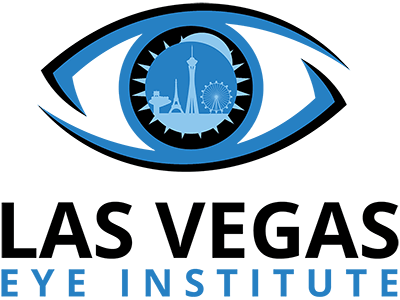What is Astigmatism?
Astigmatism is a condition that causes a distortion of vision. The most likely cause of astigmatism is the shape of the cornea. The cornea is the clear window to the eye and is the same structure that ophthalmologists reshape when we perform LASIK, PRK, or SMILE. LASIK and PRK are essentially the same procedure, and both can treat astigmatism effectively. SMILE is a significantly different procedure and can effectively treat up to about 2.5 diopters of astigmatism. As long as your surgeon is using modern LASIK technology, analyzing their outcomes through nomogram software, and has excellent equipment to precisely measure your astigmatism prior to the procedure, then you can have excellent outcomes with a large reduction in astigmatism. At Las Vegas Eye Institute, we perform all of the above, and we pride ourselves on excellent astigmatic outcomes. The following video will give you a better understanding of astigmatism and how it affects your vision.
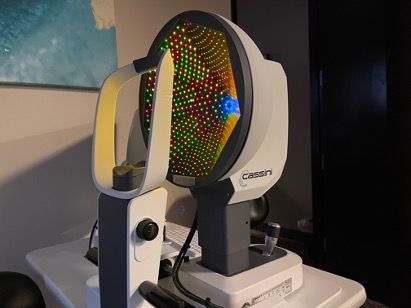
How successful is LASIK for astigmatism?
LASIK is very successful at correcting astigmatism. Most people in the USA have some level of astigmatism, but the good news is that the vast majority have levels of under 3 diopters. Fortunately, most modern LASERS can correct this amount. At Las Vegas Eye Institute, we have access to Contoura topography-guided LASIK, Wavelight wavefront optimized astigmatism, and Zeiss SMILE with astigmatism correction.
Contoura topography-guided LASIK was FDA approved to correct up to 3 diopters of astigmatism, and as such, it can correct the astigmatism of most people seeking LASIK. However, if a patient has over 3 diopters of astigmatism, then we can correct these higher amounts using our Wavelight wavefront optimized protocol that allows correction of up to 6 diopters of astigmatism.
The exciting part of modern LASIK is that at Las Vegas Eye Institute, we capture all of our LASIK patients with the Topolyzer Vario device by Alcon, which registers your unique iris details. This data is then utilized to let us precisely align your treatment under our Wavelight EX500 LASIK laser so that if your treatment is to be at 78 degrees, it is precisely aligned to 78 degrees through iris registration. This gives us the best chance to fully correct your astigmatism. Other platforms will attempt to correct at 78 degrees, but when you lie flat on your back for the treatment, your eye may have rotated up to 12 degrees which could put your treatment at a less effective axis. A 2020 study of patients undergoing cataract surgery showed that the median eye rotation with lying down was 4 degrees. At Las Vegas Eye Institute, our laser captures that rotation and gets your treatment exactly where we want it, which happens to also be where you want it!
When correcting astigmatism in general, our goal is to get people to zero remaining astigmatism. In reality, due to a variety of factors, this is unlikely to occur. However, patients with under 0.5 diopters of astigmatism after LASIK routinely have vision that is better than 20/20. At Las Vegas Eye Institute, over 95% of patients have under 0.5 diopters of astigmatism after LASIK. Most of our patients that have over 0.5 diopters of astigmatism after LASIK with us, typically started with over 3 diopters of astigmatism and, in our experience, are still very happy due to the dramatic reduction in astigmatism. However, if this residual astigmatism is affecting their vision, we can perform a LASIK enhancement that will typically get them to under 0.5 diopters of astigmatism.
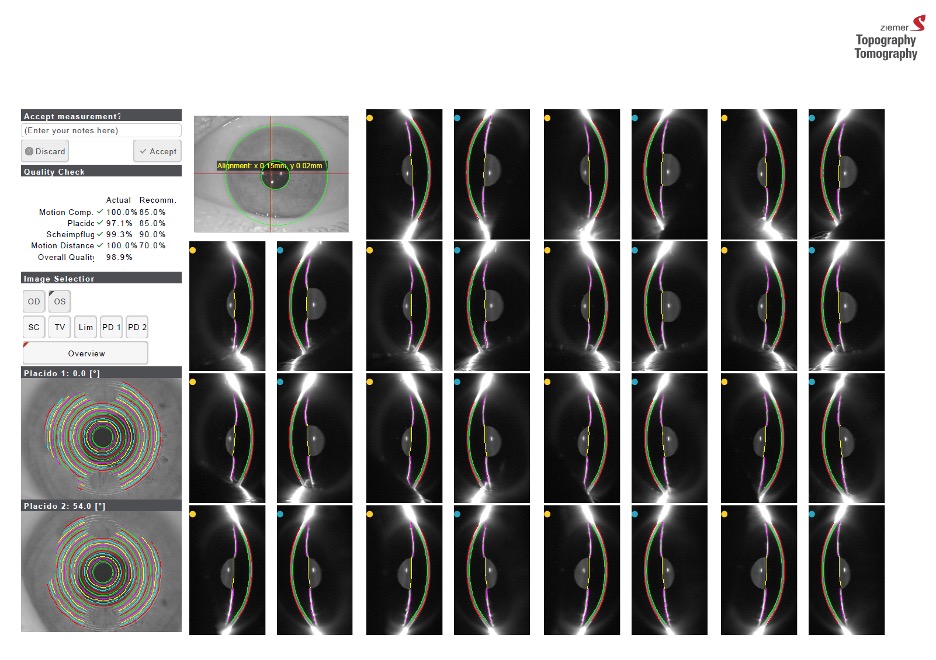
I am farsighted or nearsighted AND I have astigmatism can LASIK correct both at once?
Yes. Our modern LASIK lasers can correct astigmatism AND farsightedness (hyperopia) or nearsightedness (myopia) at the same time. You will not need to undergo separate treatments. Our Wavelight EX500 laser actually corrects the nearsighted or farsighted component of your treatment first, and then immediately after it completes this correction, it instantly changes to its astigmatism correction protocol. The EX500 technology uses an advanced eye tracker that tracks your eye 1050 times per second and places microscopic pulses 500 times per second to complete most of our treatments in under 20 seconds, with many treatments performed in under 5 seconds!
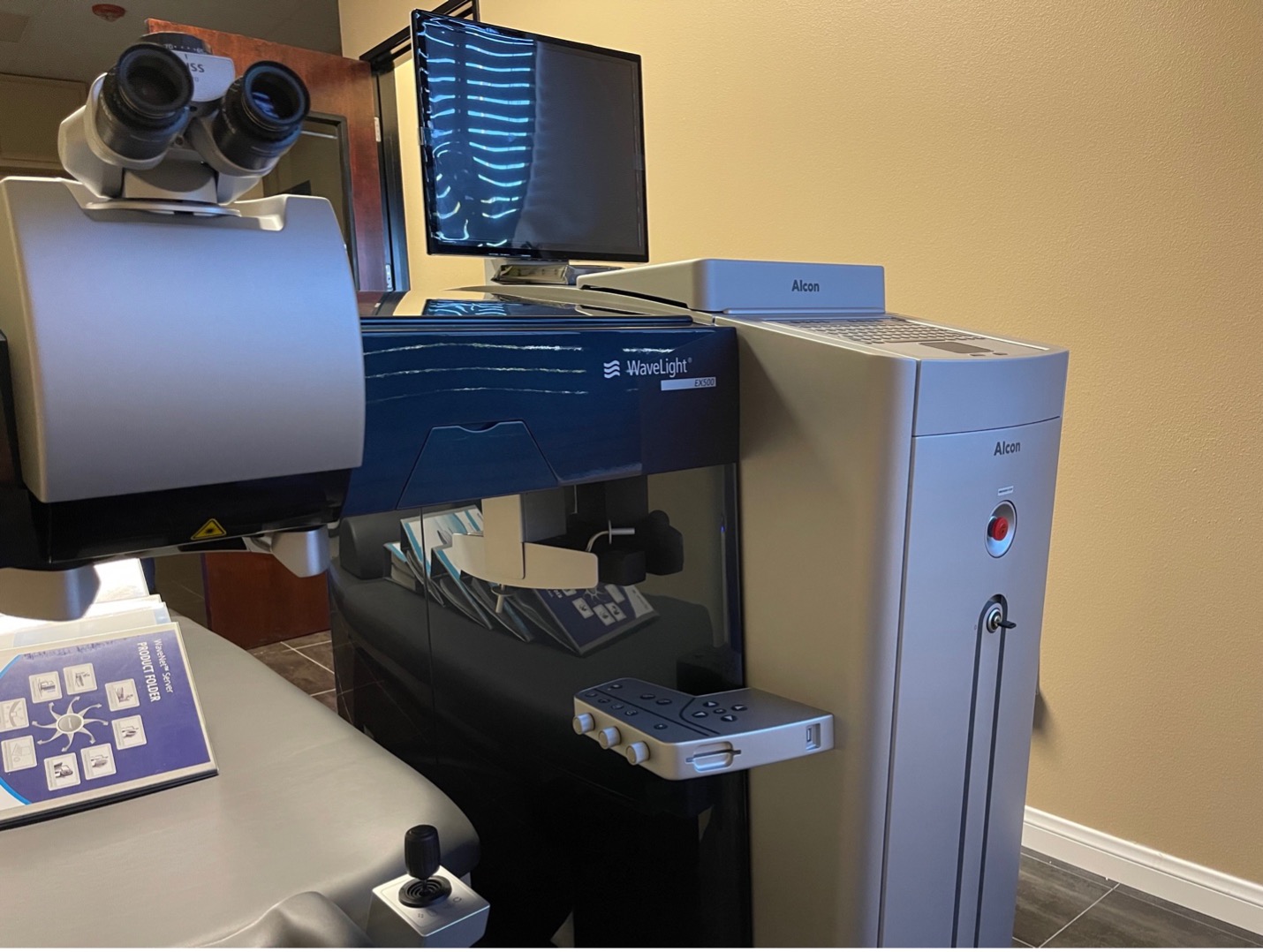
Is laser eye surgery worth it if you have astigmatism?
YES. As we described above, our ability to correct astigmatism in 2022 is phenomenal, effective, and gets most people out of glasses and contacts.
Are There Types of Astigmatism That LASIK Can’t Fix?
Yes. Some people that seek LASIK surgery have a form of astigmatism that is called “irregular astigmatism.” Irregular astigmatism is a type of astigmatism that is uneven. This means that instead of having one curvature that is equal on the upper and lower half of the cornea, the patient instead has one half of the cornea with a higher level of astigmatism on one half and a lower level on the other half. If this asymmetry is relatively small then these people can still get astigmatism and should seek out a practice like Las Vegas Eye Institute. At LVEI, we have access to the Contoura protocol on the Alcon Wavelight laser. This technology lets us precisely map out this asymmetry and create a custom treatment plan for your eye that will decrease the irregularity of your corneal shape and provide you with better vision.
Some people with irregular astigmatism actually have a condition called Keratoconus. People with Keratoconus are not good candidates for LASIK surgery. If LASIK is performed on an eye with keratoconus, then the keratoconus can worsen and also worsen the patient’s vision. Advanced practices like Las Vegas Eye Institute extensively test for keratoconus at their LASIK screenings to prevent inadvertently operating on a patient with undiagnosed keratoconus. Interestingly outside of the United States, some patients with Keratoconus have undergone a procedure called corneal crosslinking to strengthen their cornea and then have had a topography-guided PRK procedure to improve their vision. So we are progressing toward a future where a treatment that used to worsen keratoconus may soon be improving it instead.
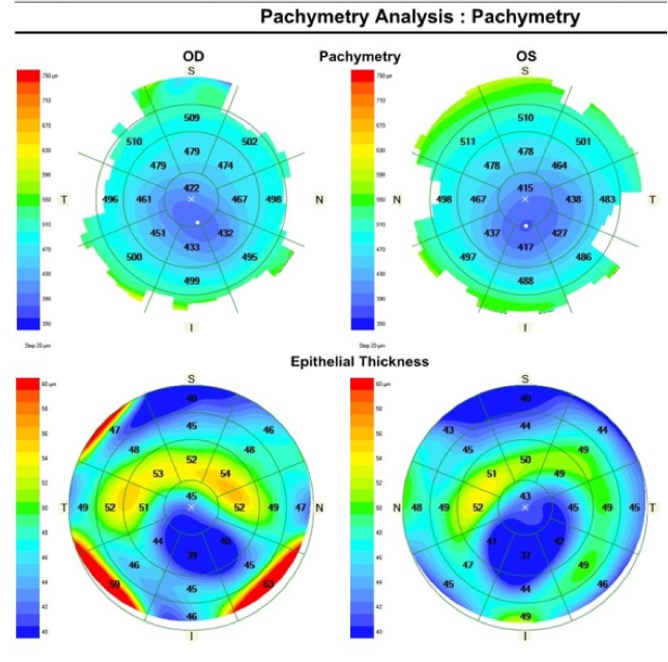
What type of eye surgery is best for astigmatism?
LASIK, PRK, and SMILE are all excellent treatment options for treating astigmatism. At Las Vegas Eye Institute, we don’t consider any procedure to be the BEST, but we custom tailor the treatment to the patient. For example, a patient with a thin cornea may be best treated with PRK, while a patient with a thick cornea may be best treated with LASIK or SMILE.
LASIK and PRK currently allow for the highest amount of astigmatism correction in the United States. LASIK and PRK both allow for the correction of up to 6 diopters of astigmatism correction with our Wavefront-optimized treatments and up to 3 diopters with our topography-guided Contoura treatments. This can correct most of our patient’s astigmatism.
As of 2022, the current limit of correction with Zeiss SMILE is 3 diopters of astigmatism. However, in our practice, we have found that Zeiss SMILE treatments programmed for 3 diopters tend to correct 2.5 diopters of astigmatism, and as such, we don’t offer this procedure at present to people with over 2.5 diopters of astigmatism. Outside of the United States, SMILE can correct 5 diopters of astigmatism, and it is possible that we will see this level in the US within the next few years as well.
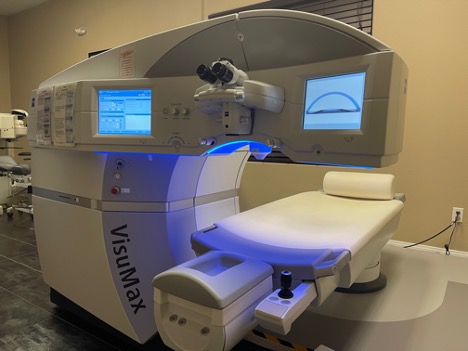
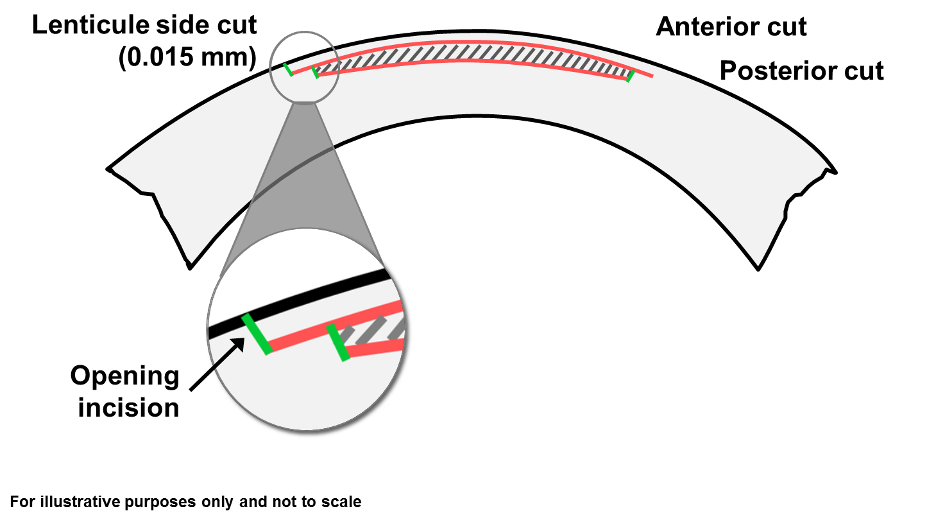
How do you permanently cure astigmatism?
LASIK, PRK, and SMILE are all permanent cures for astigmatism. Once the laser has reshaped your cornea to remove its astigmatism, the fix tends to be permanent. We may see some slight changes over time, but generally, it does not ever fully return. You can think of it as when a sculptor carves a shape into marble, that shape tends to stay there indefinitely. The excimer laser is like a microscopic corneal sculptor.
What causes astigmatism to worsen?
Astigmatism does not tend to worsen in life, and the good news is that using your eyes, using your phone, watching TV, or using a computer is NOT likely to worsen your astigmatism. However, eye rubbing is a known risk factor for weakening the cornea and leading to the progression of the condition called Keratoconus that is described above. At LVEI, we recommend that anyone that currently rubs their eyes excessively attempts to stop. If the rubbing is happening due to allergies, we strongly recommend you see us or at least begin over-the-counter antihistamine drops such as Zaditor, Alaway, Pataday, or Lastacaft. All of these drops used to be prescription medications but have been OTC now for several years and are VERY effective at decreasing itching and subsequent eye rubbing.
Why should I go to Las Vegas Eye Institute to correct my astigmatism?
At Las Vegas Eye Institute, we pride ourselves on not just having the best technologies to treat astigmatism but also having the most advanced technologies to detect it. Our advanced technologies, including iDesign wavefront analysis, Galilei Corneal Tomography, Cassini Corneal Topography, and Zeiss OCT epithelial thickness mapping, help to ensure that a pathological process (such as early Keratoconus) is not the true cause of your astigmatism. We are the only practice in Las Vegas in 2022 to not only have all of these amazing technologies under one roof but to actually use them on every single LASIK candidate that we see.
Why do we take this so seriously? LASIK is an unbelievably safe and effective treatment for treating astigmatism in appropriate candidates. However, if it is performed on people with an underlying pathological process, like mild keratoconus, it can actually make a person’s vision worse. This worsening is called corneal ectasia, and it is exceedingly rare for it to occur at practices like ours, where the preoperative testing is routine, extensive, and carefully analyzed by a cornea-trained refractive specialist like Dr. Swanic. Dr. Swanic performed his Cornea and Refractive surgery fellowship at UCLA, where he had the opportunity to gain advanced training in cornea analysis and refractive surgery. Dr.Swanic had PRK performed on his own eyes by a Cornea Fellowship-trained ophthalmologist at Tufts Medical Center (where Dr. Swanic performed his ophthalmology residency.)
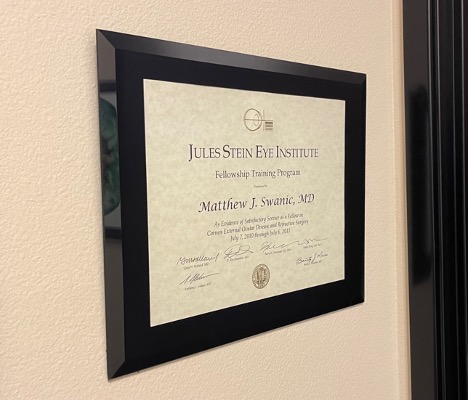
I want to investigate getting my astigmatism treated. What is my next step?
Please contact our office at 702-816-2525 to schedule a complimentary LASIK consultation where we can see if LASIK, PRK, or SMILE are right for you. You can also click here to request an appointment, and a counselor will contact you.

